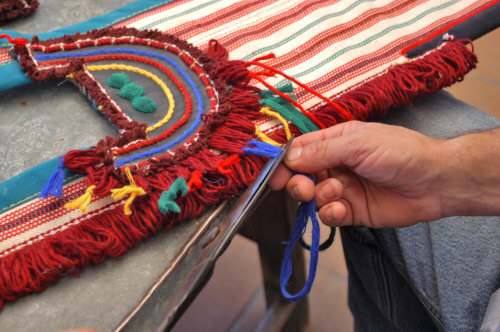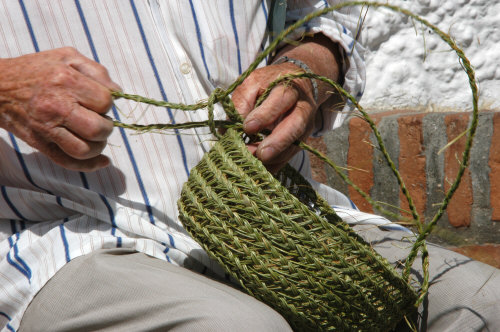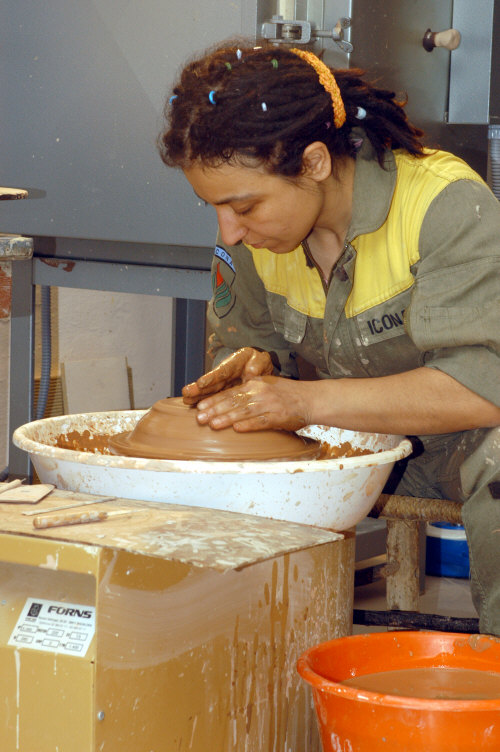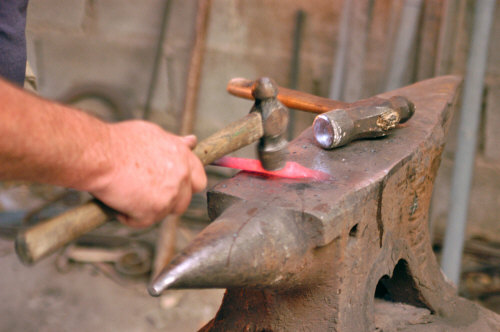|

Since ancient times, the
inhabitants of the Sierra de las
Nieves have made the most of the
materials available in the
Sierra. Their rough hands have
shaped, transformed and worked
those materials, as a result
obtaining something more than
mere objects of daily life.
For example, the esparto grass
that grows on the mountain
slopes of our region is the main
source of income for many
families of the Sierra. The
esparto was one of many plants
for which the work and
transformation meant a whole way
of life.
Nowadays, many of these manual
occupations and former trades
continue to exist in the present
consumer society as handicraft
trades, related more to
souvenirs and gift articles than
to manual work that at some time
provided the livelihood of the
village. In
each of the nine villages, there
are still today some exceptional
examples of the work of those
craftsmen of former times. The
visitor can find these articles
that have come straight from the
rough but skilful hands of our
craftsmen in the Tourist
Information Offices of the area.
The most usual is to find it in
the workshops and peoples homes.
To stroll through the narrow,
whitewashed streets of our
villages and to come across
someone working at his craft
right on the street is, without
doubt something worth watching.
Such a typical picture, of
craftsmen working on the
doorstep of their houses, are
gifts that are brought to us by
the historical reminiscences of
the Sierra de las Nieves.
And if you do not find it in any
corner of the villages, ask,
because by word of mouth they
will lead you some craftsman who
does not work out of economic
necessity but for the love of a
whole life spent working at his
honourable task.
However, below you will find a
list of some of the trades and
craft work that can be found in
each of our villages.
Pack-saddle making:
The work of the pack-saddle maker consists
of making pieces of the saddlebags and
harnessing used by pack-animals, such as
pack-saddles, saddles, pads for the
pack-saddles, saddle straps, cruppers, etc.
An example of this traditional work can be
seen at the packsaddle makers of
Casarabonela.

Chairmaking: The marshlands and
riverbanks have always been the source of
supply of the bulrushes with which the
chairmakers put the seats on the chairs.
There are some exceptional examples of this
age-old trade in the villages of Alozaina y
Yunquera.
Basketmaking: Although in Sierra de
las Nieves there is no mention of baskets,
but rather of large baskets and hampers,
which are containers woven from wicker,
rushes, reeds, willow branches or other
flexible wooden materials. This is why a
distinction must be made between
basket-weavers and basket-makers because,
here in the Sierra, the basket-weaver makes
small baskets and panniers from esparto
grass. Basket-makers can be found in
Yunquera and basket-weavers and people
working with esparto grass can be found in
all of the nine villages of the areas,
although Istán, Monda and Tolox are where
the trade is more deep-rooted.

But esparto grass weavers made a countless
number of other items and recipients, made
from this natural fibre. Esparto rope,
halters, straps, mats, carrycots, cradles
and woven strips for hats and bags all have
esparto grass (stipa tenacísima) as their
basic raw material.
Pottery: there were many potters and
weavers in this area, but nowadays they are
only to be found in Alozaina and now, known
as ceramic-workers, inEl Burgo and
Casarabonela. A difference must be made
between potters, who make pots and items
from baked clay for every-day use, and
ceramic-workers who make articles with
artistic and decorative touches, using clay,
enamel or engobe and particularly with
materials such as porcelain, china or
earthenware.

Blacksmith and forged iron: The
forge, the bellows, the anvil and the
hammer, items that together with the
rhythmic banging of the hammer accompany the
blacksmith during his hard working day. Blow
by blow he shapes railings, ploughing
utensils, and other iron tools that refuse
to disappear in the face of the advance of
modern metal-work, cast-iron, turned iron
and galvanized iron plate, which were born
from this noble trade. Blacksmith and forge
can be found in Guaro, Alozaina and
Yunquera.

|